Picture of dropped bladder. Bladder Prolapse: Symptoms, Stages, and Treatment Options
What are the symptoms of bladder prolapse. How is bladder prolapse diagnosed. What are the stages of bladder prolapse. What treatment options are available for bladder prolapse.
Understanding Bladder Prolapse: Causes and Risk Factors
Bladder prolapse, also known as cystocele or anterior vaginal wall prolapse, occurs when the bladder bulges into the front wall of the vagina. This condition typically results from the weakening and stretching of vaginal walls and pelvic floor muscles, often due to childbirth or repetitive straining.
Several risk factors contribute to the development of bladder prolapse:
- Pregnancy and childbirth
- Regular straining during bowel movements or urination
- Obesity
- Chronic cough (e.g., smoker’s cough or chronic lung diseases)
- Repetitive heavy lifting
- Pelvic or gynecological surgery
- Family history
- Connective tissue disorders
- Menopause
Is menopause a significant factor in bladder prolapse? Postmenopausal women are indeed more susceptible to this condition due to reduced estrogen levels. Estrogen plays a crucial role in maintaining the tone and elasticity of vaginal tissues and muscles. As estrogen levels decrease after menopause, these tissues become thinner and less elastic, potentially allowing the bladder to bulge into the vagina.

Recognizing the Symptoms of Bladder Prolapse
The severity of bladder prolapse and individual physical activity levels can influence the symptoms experienced. Common signs of bladder prolapse include:
- Urinary stress incontinence
- Urge incontinence
- Increased frequency of urination
- Incomplete bladder emptying
- Recurrent urinary tract infections
- Difficulty retaining tampons
- Straining to initiate urination
- Slow or intermittent urine flow
- Sensation of fullness or pressure in the vagina
- Discomfort during intercourse
- Visible bulge at the vaginal opening (in severe cases)
Can bladder prolapse cause pain during intercourse? Yes, discomfort during sexual intercourse is a common symptom of bladder prolapse. This discomfort may be accompanied by urinary leakage during intimate moments.
Diagnosing Bladder Prolapse: Methods and Tests
Accurate diagnosis of bladder prolapse involves a combination of methods:
- Medical history assessment, including evaluation of risk factors
- Physical vaginal examination to assess the degree of prolapse and pelvic floor muscle function
- Additional tests, which may include:
- Pelvic ultrasound
- Urodynamics testing
- Bladder scan for residual urine measurement
- Midstream urine test
- Magnetic resonance imaging (MRI) in certain cases
How does a urodynamics test help in diagnosing bladder prolapse? Urodynamics testing assesses bladder function and helps identify different types of incontinence associated with bladder prolapse. This test provides valuable information about the severity of the condition and guides treatment decisions.

Stages of Bladder Prolapse: Understanding the Severity
Bladder prolapse severity is often categorized into stages, providing a more accurate assessment than general terms like “mild,” “moderate,” or “severe.” The commonly used staging system includes:
- Stage 1: Bladder protrudes slightly into the vagina
- Stage 2: Bladder protrudes close to the vaginal opening
- Stage 3: Bladder protrudes outside the vagina
- Stage 4: Most severe form, with all pelvic organs protruding outside the vagina
Many gynecologists now employ the Pelvic Organ Prolapse Quantification (POP-Q) system for more precise measurements. This system measures the position of the prolapse in relation to the vaginal entrance in centimeters, providing a more objective assessment of the condition’s severity.
Why is accurate staging of bladder prolapse important? Precise staging helps healthcare providers determine the most appropriate treatment options and monitor the progression of the condition over time. It also facilitates better communication between healthcare professionals and patients regarding the severity of the prolapse.

Treatment Options for Bladder Prolapse: From Conservative to Surgical Approaches
The treatment of bladder prolapse depends on the severity of symptoms and the stage of the condition. Healthcare providers consider how bothersome the prolapse is for the patient and its impact on daily life when developing a treatment plan. Options may include:
Conservative Treatments
- Pelvic floor exercises (Kegel exercises)
- Lifestyle modifications (e.g., weight loss, avoiding heavy lifting)
- Pessary devices
Surgical Interventions
- Anterior colporrhaphy (vaginal repair)
- Laparoscopic or robotic sacrocolpopexy
- Transvaginal mesh repair (less common due to potential complications)
When is surgery recommended for bladder prolapse? Surgery is typically considered when conservative treatments fail to provide adequate relief or in cases of advanced prolapse. The decision to undergo surgery depends on various factors, including the patient’s overall health, severity of symptoms, and personal preferences.
Preventing Bladder Prolapse: Lifestyle Changes and Exercises
While not all cases of bladder prolapse can be prevented, certain lifestyle modifications and exercises may help reduce the risk or slow the progression of the condition:

- Maintaining a healthy weight
- Practicing proper lifting techniques
- Avoiding constipation through diet and hydration
- Quitting smoking
- Performing regular pelvic floor exercises
How effective are pelvic floor exercises in preventing bladder prolapse? Pelvic floor exercises, also known as Kegel exercises, can be highly effective in strengthening the muscles that support the bladder and other pelvic organs. Regular practice of these exercises may help prevent or improve mild cases of bladder prolapse.
Living with Bladder Prolapse: Coping Strategies and Support
For individuals living with bladder prolapse, adopting certain strategies can help manage symptoms and improve quality of life:
- Using absorbent pads or protective underwear for incontinence
- Practicing timed voiding to reduce urgency
- Modifying physical activities to minimize strain on the pelvic floor
- Seeking support from healthcare providers and support groups
Can bladder prolapse affect emotional well-being? Yes, bladder prolapse can have a significant impact on emotional and psychological well-being. Many individuals may experience feelings of embarrassment, anxiety, or depression related to their symptoms. Seeking support from healthcare providers, counselors, or support groups can be beneficial in addressing these emotional challenges.

Advances in Bladder Prolapse Research: Future Treatment Possibilities
Ongoing research in the field of urogynecology continues to explore new treatment options and improve existing approaches for bladder prolapse. Some areas of focus include:
- Development of new biomaterials for pelvic floor reconstruction
- Advancements in minimally invasive surgical techniques
- Exploration of regenerative medicine approaches, such as stem cell therapy
- Investigation of genetic factors contributing to pelvic organ prolapse
What role might stem cell therapy play in treating bladder prolapse? Stem cell therapy is an emerging area of research in the treatment of pelvic organ prolapse, including bladder prolapse. Preliminary studies suggest that stem cells may have the potential to regenerate and strengthen pelvic floor tissues, potentially offering a less invasive alternative to traditional surgical approaches. However, more research is needed to establish the safety and efficacy of this treatment modality.

Bladder prolapse is a complex condition that affects many individuals, particularly women who have undergone childbirth or are postmenopausal. Understanding the causes, symptoms, and treatment options is crucial for early detection and effective management. By working closely with healthcare providers and adopting appropriate lifestyle modifications, individuals with bladder prolapse can often find relief and improve their quality of life.
As research in this field continues to advance, new treatment options and preventive strategies may emerge, offering hope for improved outcomes and potentially less invasive interventions. It is essential for individuals experiencing symptoms of bladder prolapse to seek medical advice promptly, as early intervention can often lead to better management and prevention of more severe complications.
Remember that bladder prolapse is a common condition, and with proper care and support, many individuals can effectively manage their symptoms and maintain an active, fulfilling lifestyle. By staying informed about the latest developments in bladder prolapse research and treatment, patients can work collaboratively with their healthcare providers to develop personalized management strategies that best suit their individual needs and circumstances.

Bladder prolapse – Better Health Channel
Bladder prolapse or cystocele is when the bladder bulges into the front wall of the vagina. This is also referred to as anterior vaginal wall prolapse.
Bladder prolapse usually happens because of weakening and stretching of the vaginal walls and pelvic floor muscles, due to childbirth or repetitive straining. Risk factors include pregnancy, childbirth and anything else that puts pressure on the pelvic floorExternal Link, including some high-impact gym exercises.
Bladder prolapse can occur by itself, or it may happen along with another prolapse, such as a rectocele (when the bowel bulges into the back wall of the vagina) or a uterine prolapse (when the uterus and cervix drop down into the vagina).
Symptoms of bladder prolapse
The symptoms of bladder prolapse depend on the severity of the prolapse, your level of physical activity and the presence of any other type of prolapse.
They include:
- urinary stress incontinence – leaking urine when coughing, sneezing, laughing, running or walking, or urge incontinence, which is urgently needing to go and leaking on the way
- needing to empty your bladder more frequently
- inability to completely empty your bladder when going to the toilet
- recurrent urinary tract infections
- difficulty keeping a tampon in place during menstruation
- straining to get urine flow started
- a slow flow of urine that may stop and start
- a sensation of fullness or pressure inside the vagina
- a bulge or swelling felt at the vaginal opening
- discomfort with intercourse
- leaking urine with intercourse
- protrusion of the vaginal wall out through the vaginal entrance (in severe cases)
- needing to go back to the toilet immediately after finishing passing urine.

Risk factors for bladder prolapse
Risk factors for bladder prolapse include anything that puts pressure on the pelvic floor and affects its function, such as:
- pregnancy and childbirth
- regularly straining on the toilet to pass bowel motions or empty the bladder
- being overweight
- chronic cough secondary to smoker’s cough or chronic lung diseases
- repetitive lifting of children or heavy weights at work or in the gym, or any exercises where there is excessive downward pressure on the pelvic floor
- pelvic or gynaecological surgery
- strong family history
- connective tissue disease, in which the tissues in the body are not able to hold the weight of the organs
- menopause.
Postmenopausal women are more susceptible to bladder prolapse because they have reduced levels of oestrogen (the female sex hormone). Oestrogen helps to keep the vaginal tissues and muscles in good tone. When oestrogen levels drop after menopause, these tissues become thinner and less elastic, which may allow the bladder to bulge into the vagina.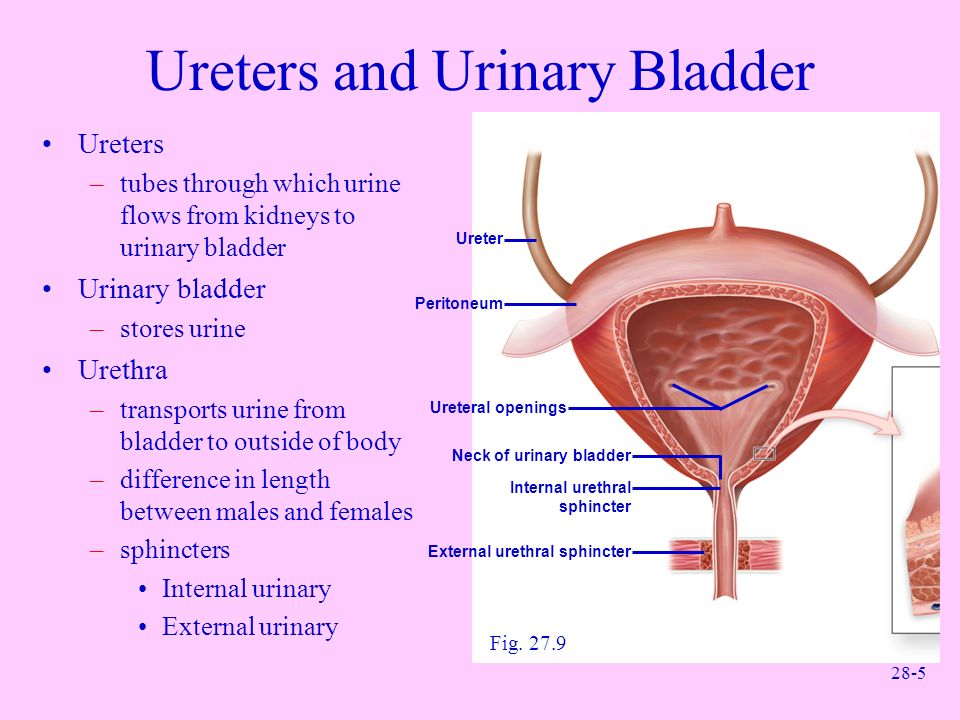
Diagnosis of bladder prolapse
Bladder prolapse is diagnosed by:
- medical history – including checking for possible risk factors
- physical vaginal examination (internal examination) – to allow assessment of the degree of prolapse, pelvic floor muscle function, presence of any other prolapse and other abnormalities in the pelvis, such as tumours or masses.
Tests for bladder prolapse
Tests that may be carried out to confirm or reject a diagnosis of bladder prolapse, depending on your symptoms, are:
- pelvic ultrasound to exclude any masses or cysts putting pressure on the bladder
- urodynamics – a test of bladder function and to assess different types of incontinence
- a bladder scan to measure residual urine – urine left in the bladder after emptying
- a midstream urine test to exclude urinary tract infection
- magnetic resonance imaging (MRI) – in some cases.
Stages of bladder prolapse
The severity of bladder prolapse can be measured in several ways. Terms such as ‘mild’, ‘moderate’ and ‘severe’ are not always completely accurate, as they depend on a person’s opinion, but are often used in day-to-day conversations to help people understand the severity of the prolapse.
Terms such as ‘mild’, ‘moderate’ and ‘severe’ are not always completely accurate, as they depend on a person’s opinion, but are often used in day-to-day conversations to help people understand the severity of the prolapse.
A more commonly used grading is:
- Stage 1 – the bladder protrudes a little way into the vagina
- Stage 2 – the bladder protrudes so far into the vagina that it’s close to the vaginal opening
- Stage 3 – the bladder protrudes out of the vagina
- Stage 4 – most severe form, in which all pelvic organs including the bladder protrude out of the vagina.
Many gynaecologists now use the Pelvic Organ Prolapse Quantification (POP-Q) system, which measures in centimetres where the prolapse is in relation to the vaginal entrance to ascertain the ‘stage’ of prolapse.
Treatment for bladder prolapse
Treatment for bladder prolapse depends on how ‘bothersome’ the prolapse is (how much trouble it gives you) and its stage.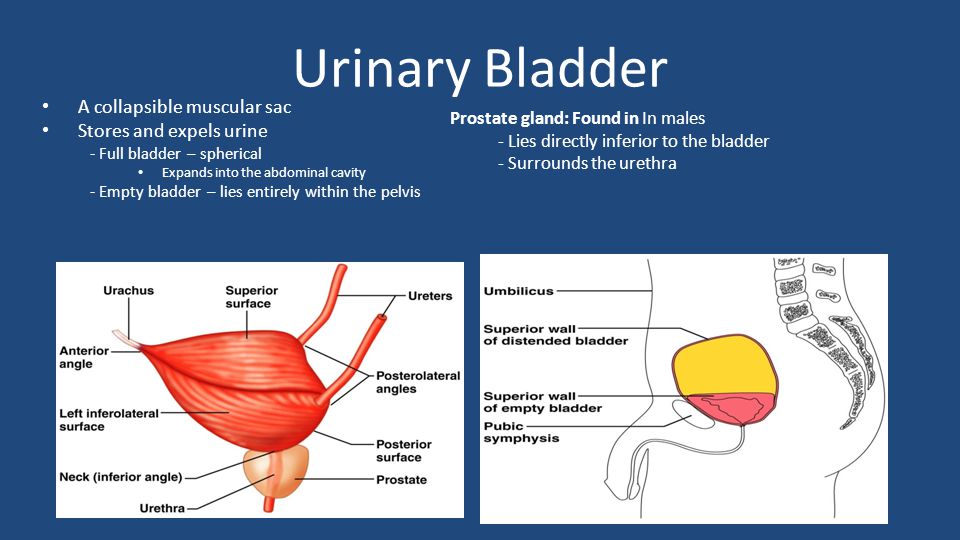 The more advanced the prolapse, the more likely it is to be bothersome. During your consultation, you and your gynaecologist will discuss the most bothersome aspects of the symptoms and how they are affecting your life. A treatment plan can be tailored based on the severity of symptoms and stage of prolapse.
The more advanced the prolapse, the more likely it is to be bothersome. During your consultation, you and your gynaecologist will discuss the most bothersome aspects of the symptoms and how they are affecting your life. A treatment plan can be tailored based on the severity of symptoms and stage of prolapse.
Treatment for asymptomatic bladder prolapse
If you have no symptoms of bladder prolapse, you may not need treatment. This may be the case with stage 1 or stage 2 prolapse. In fact, you may not be aware of the bladder prolapse at all. It may be picked up by your GP during a routine examination, such as during a cervical screening test.
Lifestyle changes and physiotherapy are the key aspects of managing such cases. There are things you can do to help prevent the condition from getting worse, which may include:
- weight loss
- management of constipation
- stopping smoking
- correction of position when sitting on the toilet
- avoiding heavy lifting
- pelvic floor exercises, which have been proven to reduce the symptoms of an early stage bladder prolapse and prevent any worsening
- seeking treatment and management for chronic cough and lung disease.

Seeing a pelvic floor physiotherapist is always recommended so that they can assess your pelvic floor function properly and show you the correct technique for doing pelvic floor exercises. The best published evidence supports supervised pelvic floor muscle exercises for the management of prolapse and urinary incontinence.
Treatment for symptomatic bladder prolapse
If you have symptoms of bladder prolapse it is recommended that, as for people with no symptoms, you make the same lifestyle changes, do pelvic floor muscle training and treat any chronic cough. Make them part of your routine.
However, sometimes prolapse can be more severe and these measures may not be enough on their own to relieve symptoms.
For these cases, there can be two different approaches:
1. Non-surgical approach – vaginal pessaries
A pessary is a device made mostly of silicone. It is inserted in the vagina to support the bladder prolapse and front vaginal wall. Pessaries come in different shapes and sizes.
Pessaries come in different shapes and sizes.
You do not need surgery to put in a pessary. It can be done in the rooms of a pelvic floor physiotherapist, continence nurse or your gynaecologist.
Some women may prefer this option if they wish to avoid or delay surgery, and it may be the safest option for women who are unfit for surgery.
You will need regular check-ups with your healthcare professional if you are using a vaginal pessary long-term.
2.Surgical approach
In some cases, when all other management options have failed to help with the symptoms, or when a woman does not want to use a pessary, surgery may be necessary.
The type of surgery used will depend on your combination of prolapse and urinary tract symptoms. Your doctor will discuss the available surgical techniques with you.
It is common to have a urinary catheter inserted during the operation to rest your bladder for a day after surgery, but this will depend on the procedure you have.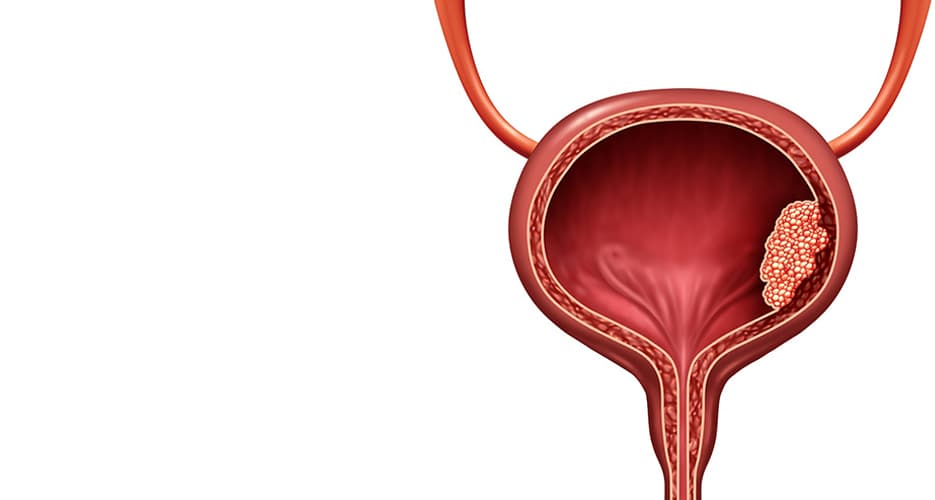
Recovery from surgery takes about six weeks. You doctor will advise you about how to look after yourself during the recovery period, and a physiotherapist can recommend appropriate exercises.
Suggestions may include:
- avoiding any lifting
- avoiding constipation
- walking – this is the best exercise during bladder prolapse surgery recovery
- doing pelvic floor exercises
- resting each day.
Self-care for bladder prolapse
Your doctor may advise you to make a few lifestyle changes to prevent bladder prolapse from worsening (or recurring after surgery). They may suggest:
- not lifting objects that weigh more than 5kg, including children
- daily exercise to help keep your bowel movements regular, but avoiding heavy weight training, sit-ups and high-impact exercise. This may include choosing lighter weights that can be easily lifted without straining; core strengthening on an exercise ball; and cardiovascular exercises such as walking, swimming or bike riding (rather than running, jumping or high-impact aerobics)
- when exercising in the gym, avoiding weight-training that causes you to hold your breath or strain.
 It’s best to reduce the weight size and increase repetitions. Walking on a treadmill, with or without an incline, is a suitable exercise
It’s best to reduce the weight size and increase repetitions. Walking on a treadmill, with or without an incline, is a suitable exercise - increasing the fibre in your diet to prevent constipation – 30g of fibre daily is recommended. Just one instance of straining can worsen bladder prolapse
- drinking six to eight glasses of fluid each day. Not drinking enough can make stools hard, dry and difficult to pass
- avoiding straining on the toilet for either bowel or bladder, as this will worsen a prolapse. Leaning forward with knees apart, forearms on thighs, a straight back and relaxed tummy will help
- doing pelvic floor exercises daily to strengthen the muscles supporting your pelvic organs. Instruction on how to do this correctly may come from a doctor, pelvic floor physiotherapist or continence nurse. These exercises may also reduce symptoms of urinary incontinence, which may be associated with a bladder prolapse
- squeezing up or bracing your pelvic floor muscles before you lift, cough, laugh or sneeze
- if you are postmenopausal, your doctor may recommend hormone therapy (usually in the form of vaginal oestrogen preparations, such as a cream, pessary or vaginal tablet) to improve vaginal secretions and blood flow and help tone the skin and muscles supporting your vagina and bladder
- seeing a doctor for any condition that causes coughing and sneezing, such as asthma, chest infections and hay fever, as repetitive sneezing and coughing may cause or worsen a bladder prolapse
- keeping within a healthy weight range.
 Being overweight is known to make symptoms worse.
Being overweight is known to make symptoms worse.
Having sex when you have a bladder prolapse doesn’t make it worse. You may wish to choose a more comfortable position if there is some discomfort.
Where to get help
- Your GP (doctor)
- Gynaecologist
- Pelvic floor physiotherapistExternal Link
- Jean Hailes for Women’s HealthExternal Link Tel. 1800 JEAN HAILES (1800 532 642)
- Continence Foundation of Australia HelplineExternal Link Tel. 1800 33 00 66
Cystocele – NIDDK
On this page:
- What is a cystocele?
- Does a cystocele have another name?
- How common is a cystocele?
- Who is more likely to have a cystocele?
- What are the complications of a cystocele?
- What are the symptoms of a cystocele?
- What causes a cystocele?
- How do health care professionals diagnose a cystocele?
- How do health care professionals treat a cystocele?
- Can I prevent a cystocele?
- Clinical Trials for a Cystocele
What is a cystocele?
A cystocele is a condition in which supportive tissues around the bladder and vaginal wall weaken and stretch, allowing the bladder and vaginal wall to fall into the vaginal canal.
Usually, the muscles and connective tissues that support the vaginal wall hold the bladder in place. With a cystocele, the muscles and tissues supporting the vagina weaken and stretch, allowing the bladder to move out of place.
A cystocele is the most common type of pelvic organ prolapse. Pelvic organ prolapse occurs when the vaginal walls, uterus, or both lose their normal support and prolapse, or bulge, into the vaginal canal or through the vaginal opening. Other nearby pelvic organs, such as the bladder or bowel, may be involved and also drop from their normal position in the body.
Health care professionals usually rank a cystocele using a grading or staging system. Grade 1 is the mildest form of the condition, and grades 3 and 4 are the most serious. With a more advanced cystocele, your bladder and vaginal wall may drop down far enough that they reach or bulge into the vaginal canal and potentially out through the opening of the vagina.
View full-sized image A cystocele occurs when supportive tissues around the vaginal wall and bladder weaken and stretch, allowing the bladder and vaginal wall to bulge into the vaginal canal.
Does a cystocele have another name?
A cystocele may be called a prolapsed bladder, anterior vaginal wall prolapse, or fallen bladder.
How common is a cystocele?
A cystocele is common. Experts estimate that nearly half of women who have given birth have some degree of pelvic organ prolapse.1 However, many other women with the condition do not have symptoms or do not seek care from a health care professional. As a result, the condition is underdiagnosed, and it is not known exactly how many women are affected by cystoceles.
Who is more likely to have a cystocele?
A cystocele can affect women of any age, but your chances of developing a cystocele increase with age because muscles and tissues often become weaker over time. Other factors that increase your risk of having a cystocele include
- giving birth vaginally
- having a history of pelvic surgery such as a hysterectomy or pelvic organ prolapse repair surgery
- being overweight or having obesity
- having a family history of pelvic organ prolapse
What are the complications of a cystocele?
A cystocele may put pressure on or lead to a kink in the urethra and cause urinary retention, a condition in which you are unable to empty all the urine from your bladder. In rare cases, a cystocele may result in a kink in the ureters and cause urine to build up in the kidney, which can lead to kidney damage.
In rare cases, a cystocele may result in a kink in the ureters and cause urine to build up in the kidney, which can lead to kidney damage.
What are the symptoms of a cystocele?
Many women with cystoceles have no symptoms. The more advanced a cystocele is, the more likely it is you will experience symptoms. Symptoms of a cystocele may include
- a vaginal bulge or the feeling that something is falling out of the vagina
- pressure in the vagina or pelvis
These symptoms may get worse when you strain, lift heavy items, cough, or stand for a long time, and symptoms may get better when you lie down.
Other symptoms may include
- urine leakage, called urinary incontinence
- difficulty starting the flow of urine, called hesitancy
- a slow urine stream
- feeling the need to urinate after finishing urination
- frequent or urgent urination
What causes a cystocele?
Weakened or damaged muscles and connective tissues that support the bladder and vaginal walls cause a cystocele.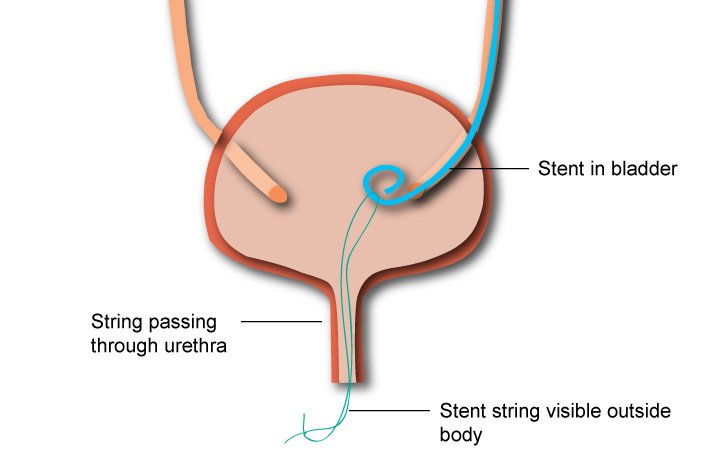 Multiple factors may contribute to the stretching or weakening of these muscles and tissues, including
Multiple factors may contribute to the stretching or weakening of these muscles and tissues, including
- pregnancy and childbirth, particularly vaginal childbirth
- conditions that repeatedly strain or increase pressure in the pelvic area, such as severe constipation, obesity, heavy lifting, or chronic cough
- prior pelvic reconstructive surgeries, such as hysterectomy or pelvic organ prolapse repair surgery
- inherited genes
- certain connective tissue disorders, such as Ehlers-Danlos syndrome
How do health care professionals diagnose a cystocele?
To diagnose a cystocele, health care professionals ask about your symptoms and medical history and perform a physical exam, including a pelvic exam to check your lower abdomen. You may be asked to stand during part of the exam, which may feel awkward but allows your health care professional to determine the severity of your cystocele. Your health care professional may also order medical tests to determine how advanced the cystocele is or to help find or rule out other problems in your urinary tract or pelvis.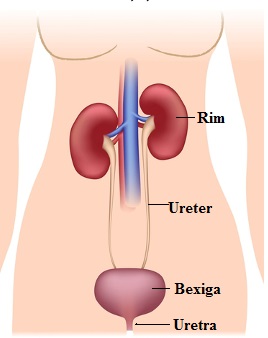
Medical history
A health care professional may ask about your
- symptoms, such as bulges or lumps in the vagina, pelvic pressure or heaviness, and urinary incontinence
- pregnancy and childbirth history
- current and past medical problems, including surgeries
- family history
- over-the-counter and prescription medicines
- bowel habits
Medical tests
If you are having trouble completely emptying your bladder or experience other lower urinary tract symptoms, your health care professional may use one or more of the following tests to look at your urinary tract.
- Postvoid residual urine measurement determines how much urine is left in your bladder after urination.
- Voiding cystourethrogram uses x-rays ;to show how urine flows through the bladder and urethra.
Many women have cystoceles. Talk with your health care professional about any symptoms you may have and possible treatments.
How do health care professionals treat a cystocele?
Your cystocele usually does not need treatment if you don’t have symptoms.
If you have a cystocele with symptoms, your health care professional may recommend nonsurgical treatment or surgery, depending on the severity of the cystocele, your age, other health problems, sexual activity, desire for future children, and personal preferences.
Nonsurgical treatments
Your health care professional may suggest
- Pelvic floor exercises. Also called Kegel exercises, these structured, individualized exercises help strengthen pelvic floor muscles. Strong pelvic floor muscles help hold the bladder in place and keep urine from leaking.
- Vaginal pessary. A pessary is a small silicone device that is inserted into the vagina to support the vaginal wall and hold your bladder in place. Your health care professional will choose from a variety of shapes and sizes of pessaries to find the pessary that is the most comfortable fit for you.

Some women use a pessary while waiting for surgical treatment or if they prefer not to have surgery. Pessaries must be removed and cleaned regularly to prevent vaginal irritation. Your health care professional will show you how to clean and reinsert the pessary on your own.
Your health care professional may suggest you use a pessary to help hold your bladder in place and ease your symptoms.
Surgery
Your health care professional may consider surgery to treat a cystocele if nonsurgical treatments don’t work or your cystocele is severe.
The most common surgical procedure to repair a cystocele is anterior vaginal repair, also called anterior colporrhaphy. During this procedure, a surgeon puts the bladder back in its normal position and tightens the muscles and tissues that hold the bladder in place using stiches.
Your health care professional may perform a procedure to treat or prevent urinary incontinence at the same time as the surgery to repair the cystocele.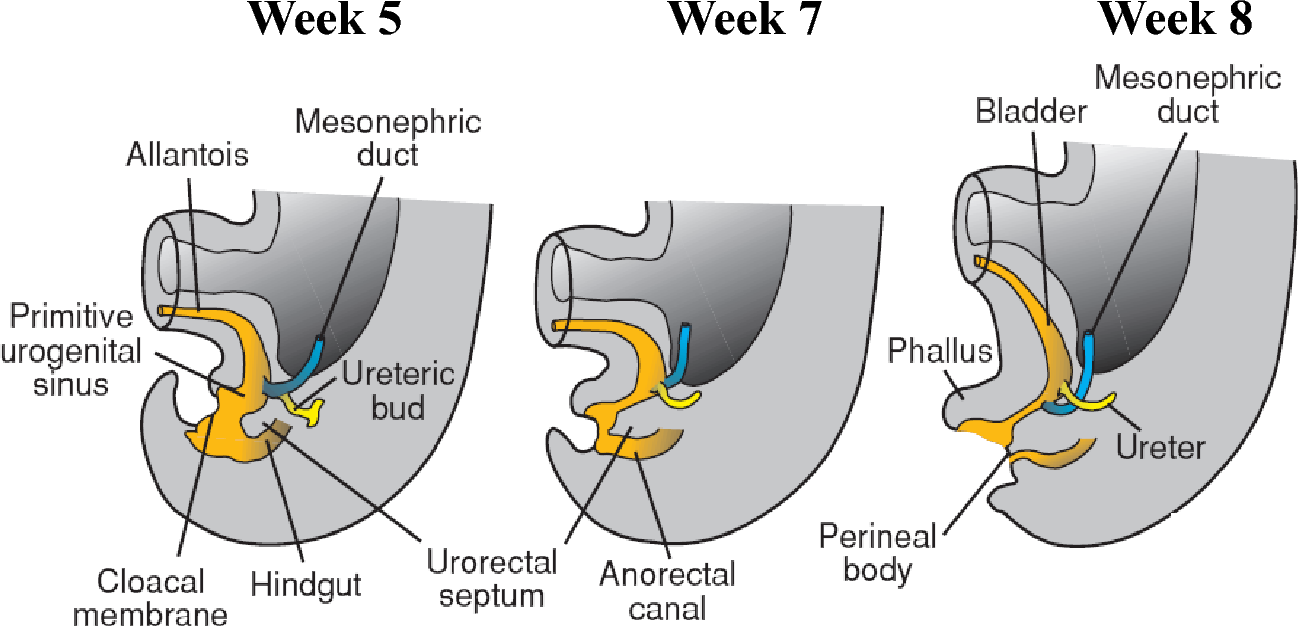
Another surgical option to treat a cystocele is obliterative surgery, which is a procedure that narrows or closes off all or part of the vagina to provide more support for the bladder. After having this surgery, a woman is no longer able to have vaginal intercourse.
Can I prevent a cystocele?
Usually a cystocele cannot be prevented, but you can take steps to relieve your symptoms and help prevent your cystocele from getting worse.
Do pelvic floor muscle exercises
Strong pelvic floor muscles help hold the pelvic organs in place. Kegel exercises can make the pelvic floor muscles stronger.
Maintain a healthy weight
Being overweight puts pressure on your pelvis. Make changes to your diet and lifestyle, such as eating more fruits and vegetables and getting regular physical activity.
Avoid heavy lifting and lift correctly
When lifting heavy objects, use your legs instead of your waist or back.
Prevent and treat constipation
Get enough fiber in your diet, drink plenty of water and other liquids, and get regular physical activity.
Control chronic cough
Get treatment for a chronic cough or bronchitis and avoid smoking.
Clinical Trials for a Cystocele
The NIDDK conducts and supports clinical trials in many diseases and conditions, including urologic diseases. The trials look to find new ways to prevent, detect, or treat disease and improve quality of life.
What are clinical trials for a cystocele?
Clinical trials—and other types of clinical studies—are part of medical research and involve people like you. When you volunteer to take part in a clinical study, you help doctors and researchers learn more about disease and improve health care for people in the future.
Researchers are studying many aspects of a cystocele, such as
- new surgical techniques to correct a cystocele
- ways to reduce complications and improve patient satisfaction after surgery
- the effect of pelvic floor muscle training on women with various stages of pelvic organ prolapse
Find out if clinical studies are right for you.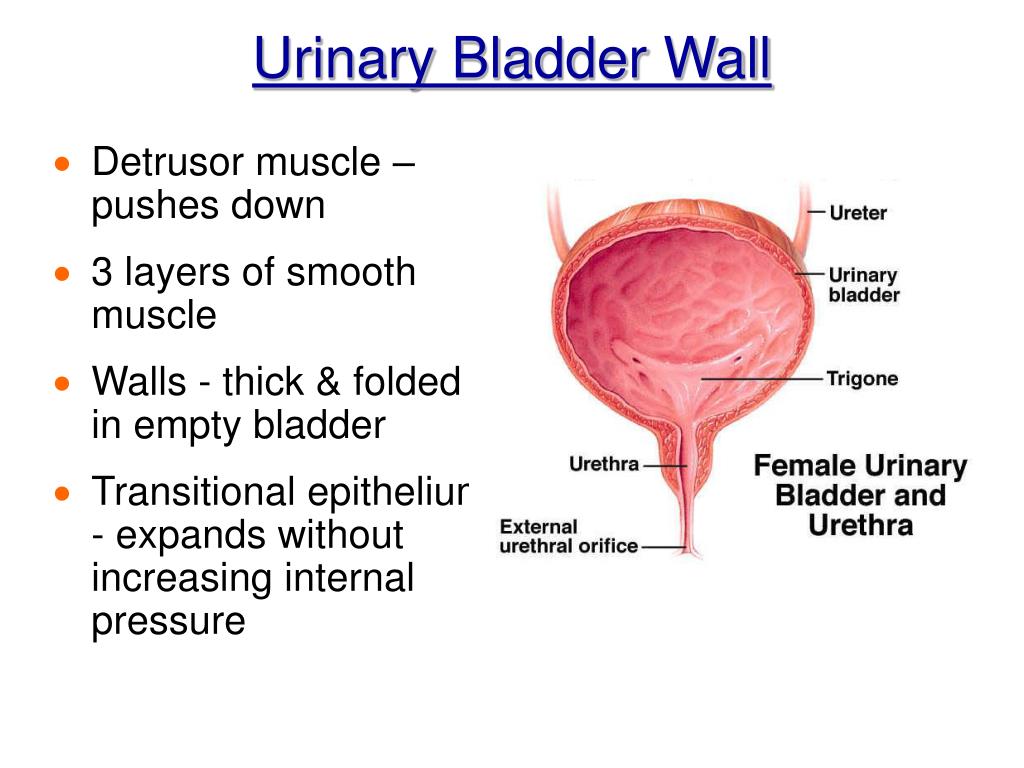
Watch a video of NIDDK Director Dr. Griffin P. Rodgers explaining the importance of participating in clinical trials.
What clinical studies for a cystocele are looking for participants?
You can view a filtered list of clinical studies on cystoceles that are open and recruiting at www.ClinicalTrials.gov. You can expand or narrow the list to include clinical studies from industry, universities, and individuals; however, the National Institutes of Health does not review these studies and cannot ensure they are safe. Always talk with your health care provider before you participate in a clinical study.
References
Bladder cancer | First Clinical Medical Center
Bladder cancer is a relatively rare form of cancer that starts in the lining of the bladder. There are many treatments for bladder cancer, including surgery to remove the bladder cancer.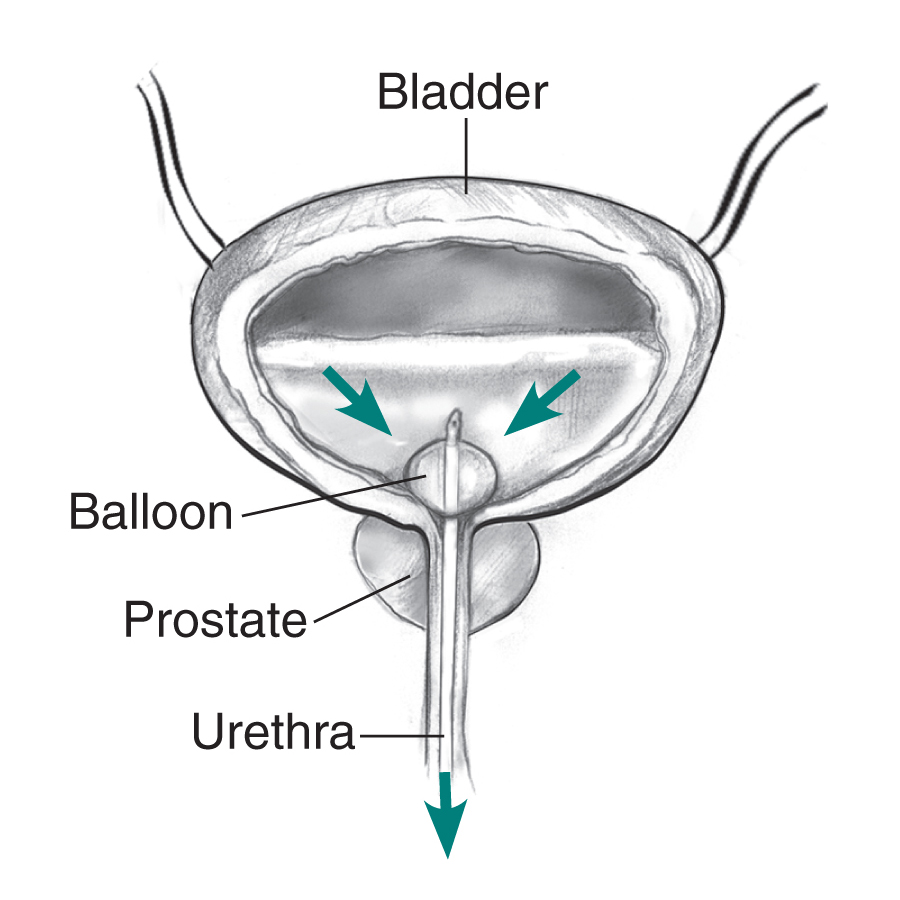 Bladder cancer can return after treatment, so you should carefully monitor your health and visit doctors.
Bladder cancer can return after treatment, so you should carefully monitor your health and visit doctors.
What is bladder cancer?
Bladder cancer is a relatively rare form of cancer that starts in the lining of the bladder. The bladder is a small, hollow organ that stores urine. Medical professionals have many options for treating this disease, including surgery. Cancer can return after treatment, so people with bladder cancer need to be vigilant and take care of their health.
Health care providers can treat early-stage bladder cancer – cancer that is found and treated before it has had a chance to spread – but about 75% of early-stage bladder cancers come back.
The effects of cancer on the body
The bladder is a triangular organ located between the thigh bones, above the urethra and below the kidneys. Urine from the kidneys drains into the bladder, which is lined with tissue called the urothelium. The urothelium is made up of cells that stretch when the bladder fills with urine and collapse when it empties (the bladder holds about 2 cups of urine).
Bladder cancer occurs when certain cells in the tissue lining the bladder mutate or change into abnormal cells that multiply and cause tumors in the bladder. If left untreated, bladder cancer can grow through the walls of the bladder to nearby lymph nodes and then to other parts of the body, including the bones, lungs, or liver.
Types of bladder cancer
There are three types of bladder cancer. Each type is named after the cells that line the wall of the bladder where the cancer started. The types of bladder cancer are:
- Transitional cell carcinoma: This cancer begins in the transitional cells of the inner lining of the bladder wall. About 90% of all bladder cancers are transient. In this type of cancer, the abnormal cells spread from the inner lining to other layers deep within or through the wall of the bladder into the surrounding fatty tissues. This type of cancer is also known as urothelial.
- Squamous cell carcinoma: Squamous cells are thin, flat cells that line the inside of the bladder.
 It accounts for about 5% of bladder cancers and usually develops in people who have had inflammation or irritation of the bladder for a long time.
It accounts for about 5% of bladder cancers and usually develops in people who have had inflammation or irritation of the bladder for a long time. - Adenocarcinoma: Adenocarcinoma cancer is cancer of the glands that line organs, including the bladder. It is a very rare type of cancer, accounting for 1% to 2% of all bladder cancers.
- Small cell carcinoma of the bladder: This extremely rare cancer affects about 1,000 people in the US alone.
- Sarcoma: In rare cases, soft tissue sarcoma originates in the muscle cells of the bladder.
Health care providers may also classify bladder cancer as non-invasive, non-muscle invasive, or muscle invasive.
- Non-invasive: This bladder cancer can be tumors in a small area of tissue or cancer that is only on or near the surface of the organ.
- Non-muscle-invasive: This is bladder cancer that has advanced into the body but has not spread to the muscles.
- Muscle-invasive: This cancer has grown into the muscles of the bladder wall and may have spread to the fatty layers or tissues of external organs.

How common is bladder cancer?
Bladder cancer is the fourth most common type of cancer affecting men. Men are four times more likely to develop bladder cancer than women. But women with bladder cancer tend to have advanced forms of the disease because they are unaware of the symptoms of bladder cancer. According to the Bladder Cancer Advocacy Network, women are less likely to notice blood in their urine (hematuria), the first and most important symptom of bladder cancer, because they associate blood in their urine with common gynecological problems.
Bladder cancer usually affects people aged 55 and older. On average, people are 73 years old when they are diagnosed with bladder cancer.
Symptoms of bladder cancer
Blood in the urine is the most common symptom of bladder cancer. However, the presence of blood in the urine is not a sure sign of cancer. Other diseases also cause this problem. However, if blood is found in the urine, you should consult a doctor.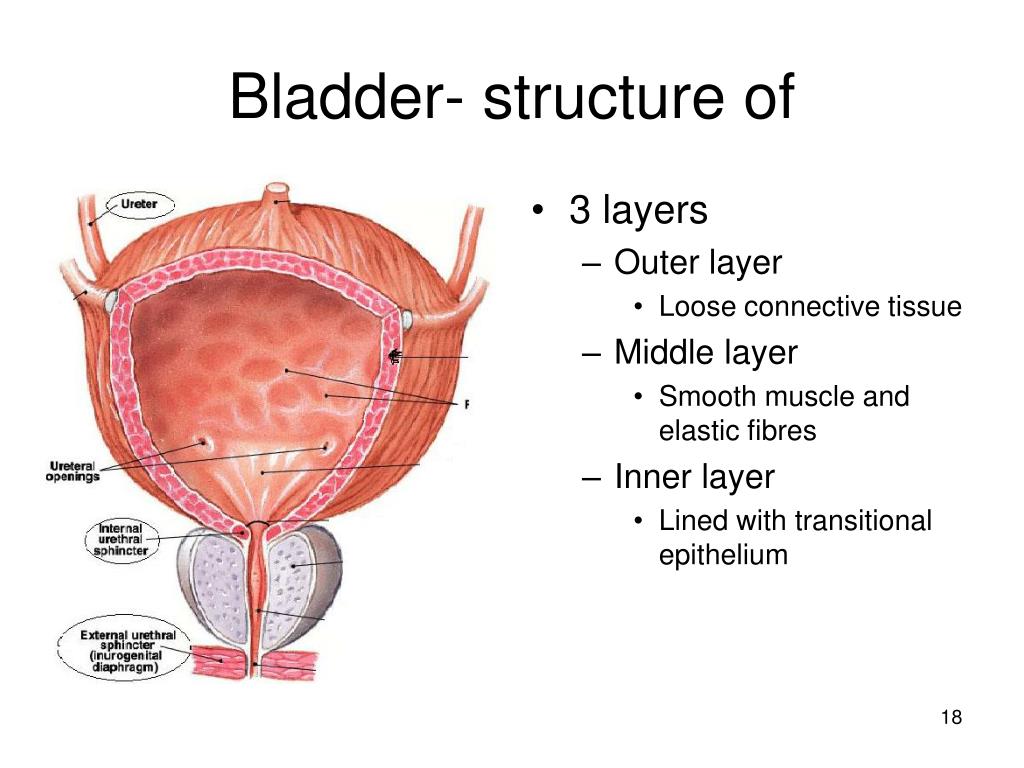 Other symptoms of bladder cancer include:
Other symptoms of bladder cancer include:
- Visible blood in the urine (hematuria): Health care providers may also find microscopic amounts of blood in the urine during a urinalysis.
- Pain when urinating (dysuria): This is a burning or tingling sensation that you may feel when you start to urinate or after urinating. Men may experience pain in the penis before or after urinating.
- Frequent urination: Frequent urination means that you urinate many times in a 24 hour period.
- Problems with urination: The flow of urine may start and stop, or the flow may not be as strong as usual.
- Persistent bladder infections: Bladder infections and symptoms of bladder cancer share common features. Contact your healthcare provider if you have a bladder infection that does not go away after antibiotic treatment.
Causes of Bladder Cancer
Medical professionals and researchers do not know exactly why certain bladder cells mutate and become cancerous. They identified many different risk factors that can make you more likely to develop bladder cancer, including:
They identified many different risk factors that can make you more likely to develop bladder cancer, including:
- Cigarette smoke: Cigarette smoking more than doubles the risk of bladder cancer. Pipe and cigar smoking, as well as secondhand smoke, can also increase the risk.
- Radiation exposure: Radiation therapy for cancer treatment may increase the risk of developing bladder cancer.
- Chemotherapy: Some chemotherapy drugs may increase the risk.
- Exposure to Certain Chemicals: Studies show that people who work with certain chemicals used in dyes, rubber, leather, paints, certain textiles, and hairdressing products may be at increased risk.
- Frequent bladder infections: People who have frequent bladder infections, bladder stones, or other urinary tract infections may have an increased risk of developing squamous cell carcinoma.
- Chronic catheter use: People who chronically need a bladder catheter may be at risk of developing squamous cell carcinoma.

Diagnosis and Tests
To diagnose bladder cancer, health care providers perform a range of tests, including:
- Urinalysis: Health care providers use a variety of tests to analyze your urine. In this case, they may do a urinalysis to rule out an infection.
- Cytology: Doctors examine cells under a microscope for signs of cancer.
- Cystoscopy: This is the primary test for detecting and diagnosing bladder cancer. For this test, doctors use a lighted, pencil-sized tube called a cystoscope to look at the inside of the bladder and urethra. They may use a fluorescent dye and a special blue light that makes it easier to detect cancer in the bladder. Doctors may also take tissue samples during a cystoscopy.
- If your urinalysis, cytology, and cystoscopy results show you have bladder cancer, health care providers will do tests to learn more about the cancer, including:
- Transurethral resection of a bladder tumor (TURBT): Doctors perform this procedure to remove bladder tumors for additional testing.
 The TURBT procedure can also be a treatment, removing bladder tumors before the tumors can invade the muscle wall. This study is performed on an outpatient basis under spinal or general anesthesia.
The TURBT procedure can also be a treatment, removing bladder tumors before the tumors can invade the muscle wall. This study is performed on an outpatient basis under spinal or general anesthesia. - Magnetic resonance imaging (MRI): This test uses a magnet, radio waves, and a computer to take detailed pictures of the bladder.
- Computed tomography (CT): Doctors may do this test to see if the cancer has spread outside the bladder.
- Chest x-ray: This test allows doctors to check for signs of cancer spreading to the lungs.
- Bone scan: Like a chest x-ray, a bone scan looks for signs of cancer spreading to the bones.
Health care providers then use the information about the cancer to determine the stage of the disease. Cancer staging helps doctors plan treatment and develop a potential prognosis or expected outcome.
Disease stages
Bladder cancer can be either early stage (confined to the lining of the bladder) or invasive (invading the bladder wall and possibly spreading to nearby organs or lymph nodes).
Stages range from TA (confined to the bladder lining) to IV (most invasive). In the earliest stages (TA, T1, or CIS), the cancer is confined to the inner lining of the bladder or to the connective tissue just below the lining, but has not yet invaded the main muscular wall of the bladder.
Stages II to IV mean invasive cancer:
- In stage II, the cancer has spread to the muscular wall of the bladder.
- In stage III, the cancer has spread to fatty tissue outside the muscle wall of the bladder.
- In stage IV, the cancer has metastasized (spread) from the bladder to the lymph nodes, other organs, or bones.
A more complex and preferred staging system is TNM, which stands for “tumor, nodal involvement and metastasis”. In this system:
- Invasive bladder tumors can range from T2 (tumor extends into the underlying muscle wall under the muscularis propria) to T4 (tumor extends outside the bladder into nearby organs or the pelvic side wall).

- Lymph node involvement ranges from N0 (no cancer in the lymph nodes) to N3 (cancer in many lymph nodes or one or more large lymph nodes larger than 5 centimeters).
- M0 means that there are no metastases (spread) outside the pelvis. M1 means that the metastases have spread beyond the pelvis.
Bladder Treatment
There are four treatments for bladder cancer. Health care providers may use any or all of these treatments, or combine them.
Surgery
Surgery is a common treatment for bladder cancer. Doctors choose surgical options based on the stage of the cancer. For example, in many cases of TURBT, the procedure used for diagnosis allows cancer that has not spread to be treated. Medical professionals either remove the tumor or use high-energy electricity to burn it out in a process known as fulguration.
Radical cystectomy is another treatment option. During this operation, the bladder and surrounding organs are removed. It is performed if the cancer has spread outside the organ or if there are several early-stage tumors throughout the bladder. Doctors also perform an operation known as urinary diversion.
It is performed if the cancer has spread outside the organ or if there are several early-stage tumors throughout the bladder. Doctors also perform an operation known as urinary diversion.
After surgery, your doctor may give you chemotherapy or radiation therapy to kill cancer cells that the surgery may have missed. This is adjuvant therapy.
Chemotherapy
These are drugs that kill cancer. Doctors may use intravesical therapy to deliver chemotherapy drugs directly to the bladder through a tube inserted into the urethra. Intravesical therapy targets cancer without damaging healthy tissue.
Immunotherapy
Immunotherapy is a treatment that uses your immune system to attack cancer cells. There are different types of immunotherapy:
- Bacillus Calmette-Guerin (BCG): This is a vaccine that helps boost your immune system.
- PD-1 and PD-L1 inhibitor therapy: PD-1 and PD-L1 are proteins found on certain cells. PD-1 is found on the surface of T cells, which help regulate the body’s immune responses.
 PD-L1 is a protein found on the surface of some cancer cells. When these two proteins join, the compound prevents T cells from killing cancer cells. With inhibitor therapy, these two proteins cannot fuse, allowing T cells to kill cancer cells.
PD-L1 is a protein found on the surface of some cancer cells. When these two proteins join, the compound prevents T cells from killing cancer cells. With inhibitor therapy, these two proteins cannot fuse, allowing T cells to kill cancer cells.
Radiation therapy
Radiation therapy can be an alternative to surgery. Health care providers may combine radiation therapy with TURBT and chemotherapy. This treatment is an alternative to surgery to remove the bladder. Before recommending this treatment, medical professionals consider factors such as tumor growth and characteristics.
Targeted Therapy
Targeted Therapy targets genetic changes that turn healthy cells into cancer cells. For example, drugs called FGFR gene inhibitors target cells with gene changes that help cancer cells grow.
First signs of bladder cancer
The most common sign is blood in the urine. If blood appears in the urine, you should consult a doctor.
Prevention
You may not be able to prevent bladder cancer, but it’s good to know the risk factors that can increase your chance of developing bladder cancer. Risk factors for bladder cancer include:
Risk factors for bladder cancer include:
- Cigarette smoking: Cigarette smoking more than doubles the risk of developing bladder cancer. Pipe and cigar smoking or secondhand smoke also increases this risk.
- Cancer treatment: Radiation therapy is the second most common risk factor. People who take certain chemotherapy drugs may also have an increased risk of developing bladder cancer.
- Exposure to certain chemicals: People who work with chemicals such as aromatic amines (chemicals used in dyes) are at increased risk. Extensive exposure to rubber, leather, certain textile materials, paint, and hairdressing products, usually associated with occupational exposure, also increases the risk.
- Infections: People who have frequent bladder infections, bladder stones, or other urinary tract disorders may have an increased risk of developing bladder cancer.
- Past bladder cancer: People with a history of bladder cancer are at increased risk of developing new or recurrent bladder tumors.

Is bladder cancer a deadly disease? Survival prognosis
If left untreated, bladder cancer can spread to other parts of the body. Cancer that has metastasized or spread can affect how long you live with bladder cancer. As with many other types of cancer, early detection and treatment increases the chances of living longer with bladder cancer. Statistically, 96% of people who received early-stage cancer treatment were still alive five years after diagnosis. Overall, 77% of people with bladder cancer were alive five years after diagnosis.
How can I take care of myself?
About half of people with bladder cancer have early-stage cancer that is relatively easy to treat. But bladder cancer often comes back (recurs). People who have had bladder cancer should have regular check-ups after treatment. Being vigilant about your follow-up treatment is one of the steps you can take to take care of yourself. Here are some other recommendations:
- Eat a heart-healthy diet: Plan a menu that includes skinless poultry and fish, low-fat dairy products, nuts and legumes, and a variety of fruits and vegetables.

- Focus on high-fiber foods: Bladder cancer treatment can cause digestive problems, and a high-fiber diet can help.
- Get some exercise: Light exercise can help manage stress.
- Socialize with others: Bladder cancer often comes back. It’s not easy to have a rare disease that can come back. Connecting with people who understand what you’re going through can help.
Urinary diversion
Some people with bladder cancer require surgery to remove the bladder, the natural reservoir for urine. There are three types of urine diversion surgeries. All three types involve the surgical conversion of part of the bowel into a urine output tube or urine storage reservoir.
Urinary diversion surgery can be a challenging lifestyle change. If you need urinary diversion surgery, ask your healthcare provider to explain the advantages and disadvantages of each type of surgery. This way you will know what to expect and how to take care of yourself.
When should I contact my doctor?
If you have been treated for bladder cancer, you should contact your healthcare provider if you experience symptoms that may indicate a return of the cancer.
What questions should I ask my doctor?
Bladder cancer is relatively rare, so you may not know as much about it as you would like. Here are a few questions you might find helpful:
- What stage of bladder cancer do I have?
- What are the possible treatments?
- What are the side effects of the treatment?
- Will I need surgery?
- How will the operation affect my daily life?
- How often does bladder cancer come back?
- How to treat recurrent bladder cancer?
- Are there any advanced clinical trials?
If you have bladder cancer, you may find it helpful to know that about half of all people with this disease are treated when their tumors are confined to the inner layer of the bladder wall.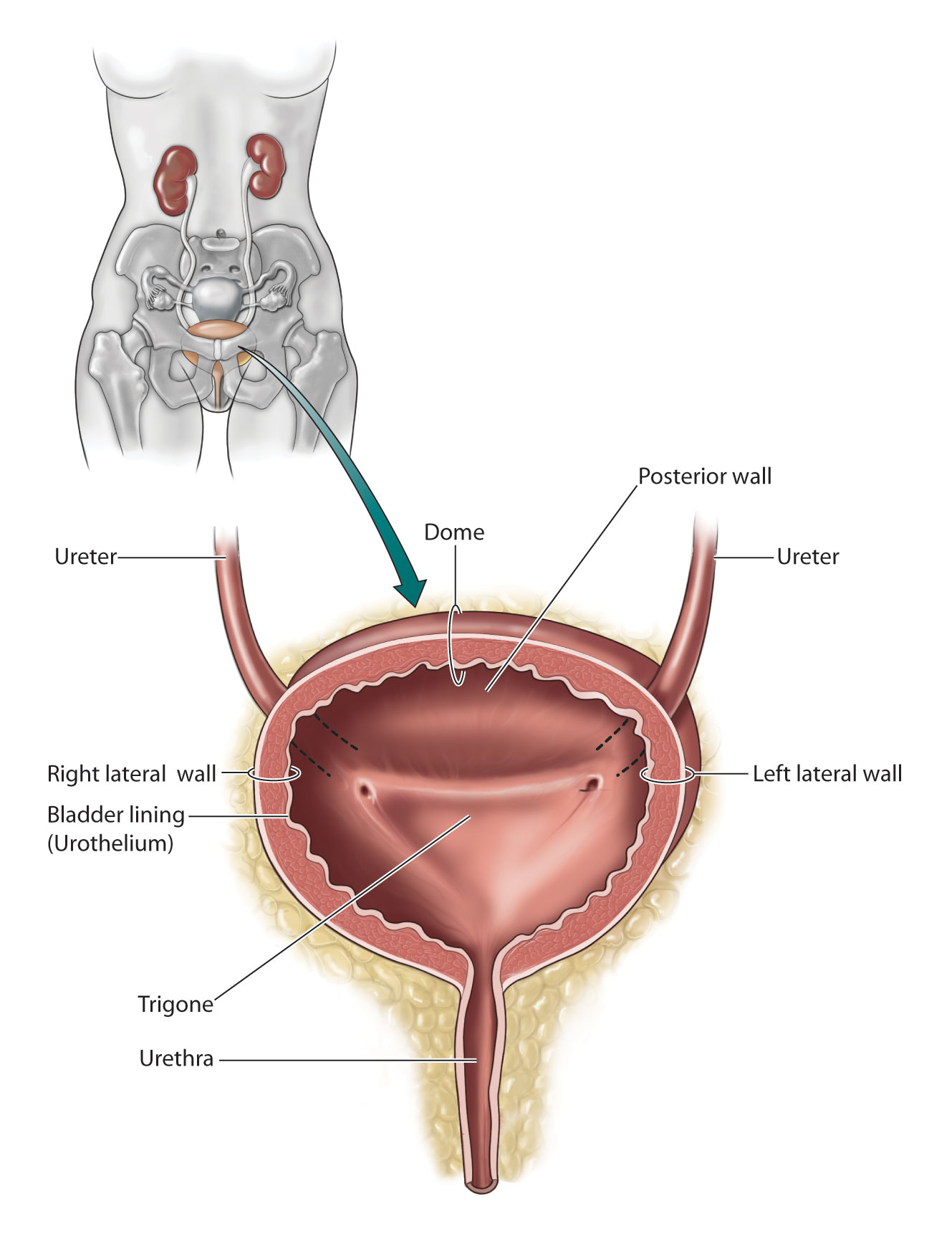 For them, surgery to remove the tumor means they are free of cancer. But bladder cancer often comes back (recurs). If you’re worried about cancer coming back, talk to your healthcare provider. This is the best source of information about the risk factors that increase your chance of getting bladder cancer again. The doctors at the clinic will help you stay alert for symptoms that could be signs of a recurrence of bladder cancer and will be there for you if you need additional treatment for bladder cancer.
For them, surgery to remove the tumor means they are free of cancer. But bladder cancer often comes back (recurs). If you’re worried about cancer coming back, talk to your healthcare provider. This is the best source of information about the risk factors that increase your chance of getting bladder cancer again. The doctors at the clinic will help you stay alert for symptoms that could be signs of a recurrence of bladder cancer and will be there for you if you need additional treatment for bladder cancer.
Ultrasound of the kidneys and bladder
Ultrasound is the leading method in diagnosing diseases of the genitourinary system. The effectiveness of such a study directly depends on the qualifications of the specialist conducting it, as well as the patient’s compliance with the recommendations regarding its conduct.
Ultrasound of the kidneys has a number of significant advantages over other diagnostic methods. The main one is complete safety, the virtual absence of contraindications, therefore, such a procedure can be applied even to pregnant women and children, unlike x-rays and computed tomography, which require the preliminary introduction of contrast.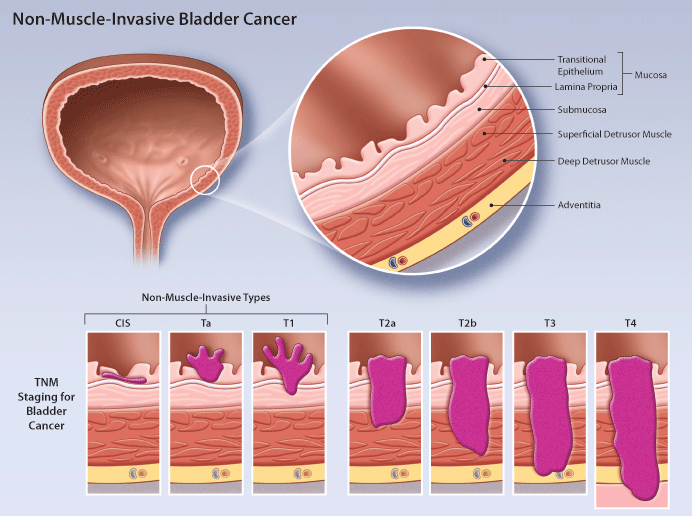
How the procedure is performed
A special scanner is used in the renal ultrasound, which makes it possible to obtain an actual image of the organs in real time. A special type of ultrasound energy is reflected, after which it is captured by a special sensor and recoded on the screen of the device. The resulting “picture” of the organ or system under study can be two or three-dimensional.
The projected image of the kidney and bladder ultrasound comes in a variety of colors. The shade can vary from black to light. This is due to the density of the organ structure. For example, a liquid medium of a homogeneous type is displayed on the apparatus as a hollow formation of a rich black tint. A light color has a structure with a high level of density.
Ultrasound of the kidneys and bladder uses a variety of transducers. They differ in the frequency of transmission of ultrasonic waves. The higher this indicator, the more massive the scale of the image and the completeness of the reproduced picture.
At the time of manipulation, the patient is laid on his side if a kidney test is being performed. With an ultrasound of the bladder, the patient lies on his back. The skin is lubricated with a special gel, which is required to facilitate the sliding of the sensor. In addition, the substance greatly facilitates the wave permeability.
Indication for examination
Ultrasound of the kidneys and bladder makes it possible to identify various pathologies. I would like to note that many diseases, for example, urolithiasis, hydronephrosis develop virtually without symptoms. For this reason, experts recommend undergoing such a study even in the absence of any complaints once a year.
In addition, bladder ultrasound is indicated in the following situations:
- Pain in the lumbar region or lower abdomen;
- Discomfort during urination, frequent diuresis especially at night;
- Change in color of urine, its turbidity, possible formation of streaks of blood in it;
- The presence of elevated body temperature in the absence of other signs of disease.
 Such a symptom is especially dangerous for children, since often these “bells” indicate the presence of pyelonephritis;
Such a symptom is especially dangerous for children, since often these “bells” indicate the presence of pyelonephritis; - Puffiness;
- Systematically elevated blood pressure.
These conditions may indicate the formation of kidney or urinary stones, the presence of inflammation or atrophy.
In addition, such a study is also required after surgical therapy, as well as at the stage of rehabilitation after an illness that can negatively affect the genitourinary system. Not infrequently, the use of nephrotoxic drugs is also an indication for undergoing diagnostics. It is obligatory to undergo ultrasound during pregnancy.
In order to obtain the most accurate test results, you should use the services of a competent clinic. For example, ask for help at the Vitom Computed Tomography Center in Kasli. Specialists with extensive experience and high qualifications perform the procedure on the latest equipment, which allows you to complete the procedure quickly, painlessly and with maximum accuracy.
MRI examinations from the same category
Full list of ultrasound services
| Abdominal ultrasound | А.04.16.001 |
| Kidney ultrasound | А04.28.002.001 |
| Renal Doppler | А04.12.001.002 |
| Ultrasound of internal organs | A.04.16.001 A04.28.002.001 A04.28.002.003 |
| Pelvic organs | А04.20.001 |
| Ultrasound of the prostate (through the abdominal wall) | А04.21.001.001 |
| Bladder, determination of residual urine | А04.28.002.003 |
| Thyroid ultrasound | А04.22.001 |
| Ultrasound of the mammary glands and regional lymph nodes | А04.20.002 |
| Ultrasound of superficial soft tissues | А04.01.001 |
| Ultrasound of the scrotum | А04.28.003 |
| Ultrasound of lymph nodes | А04.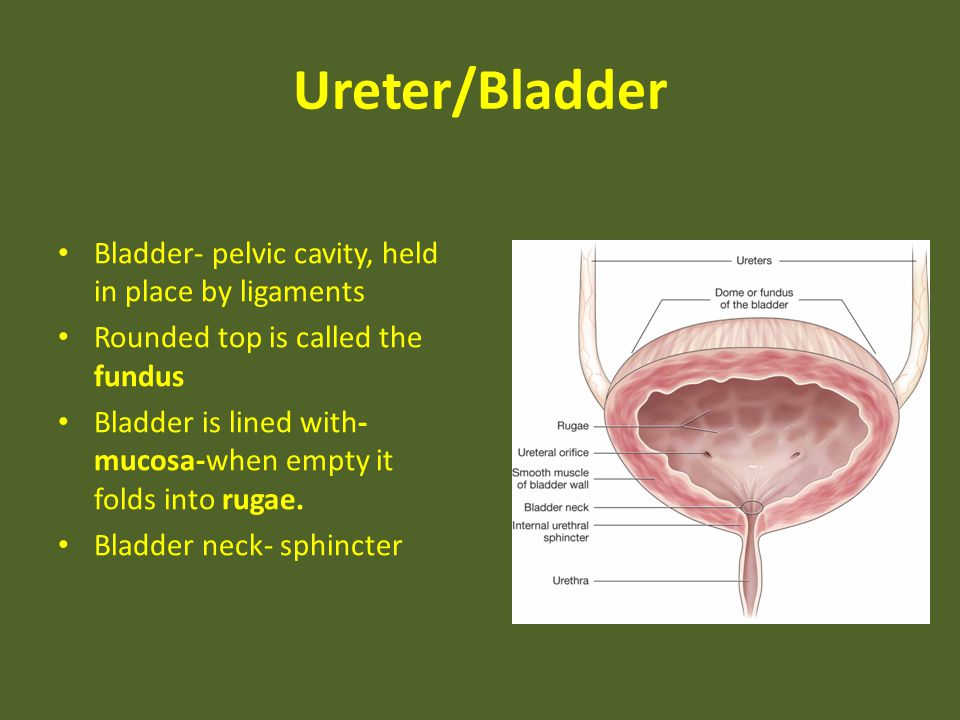 |



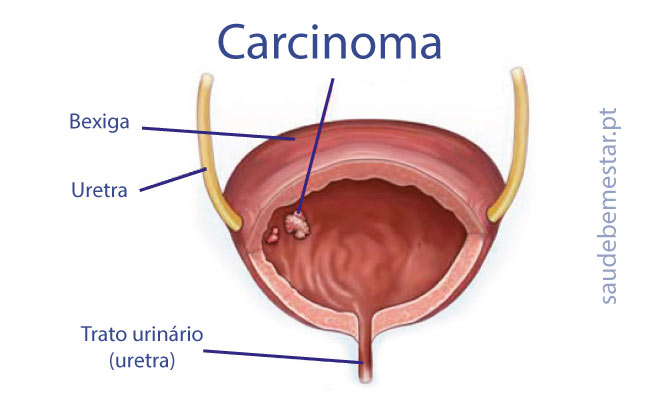 It’s best to reduce the weight size and increase repetitions. Walking on a treadmill, with or without an incline, is a suitable exercise
It’s best to reduce the weight size and increase repetitions. Walking on a treadmill, with or without an incline, is a suitable exercise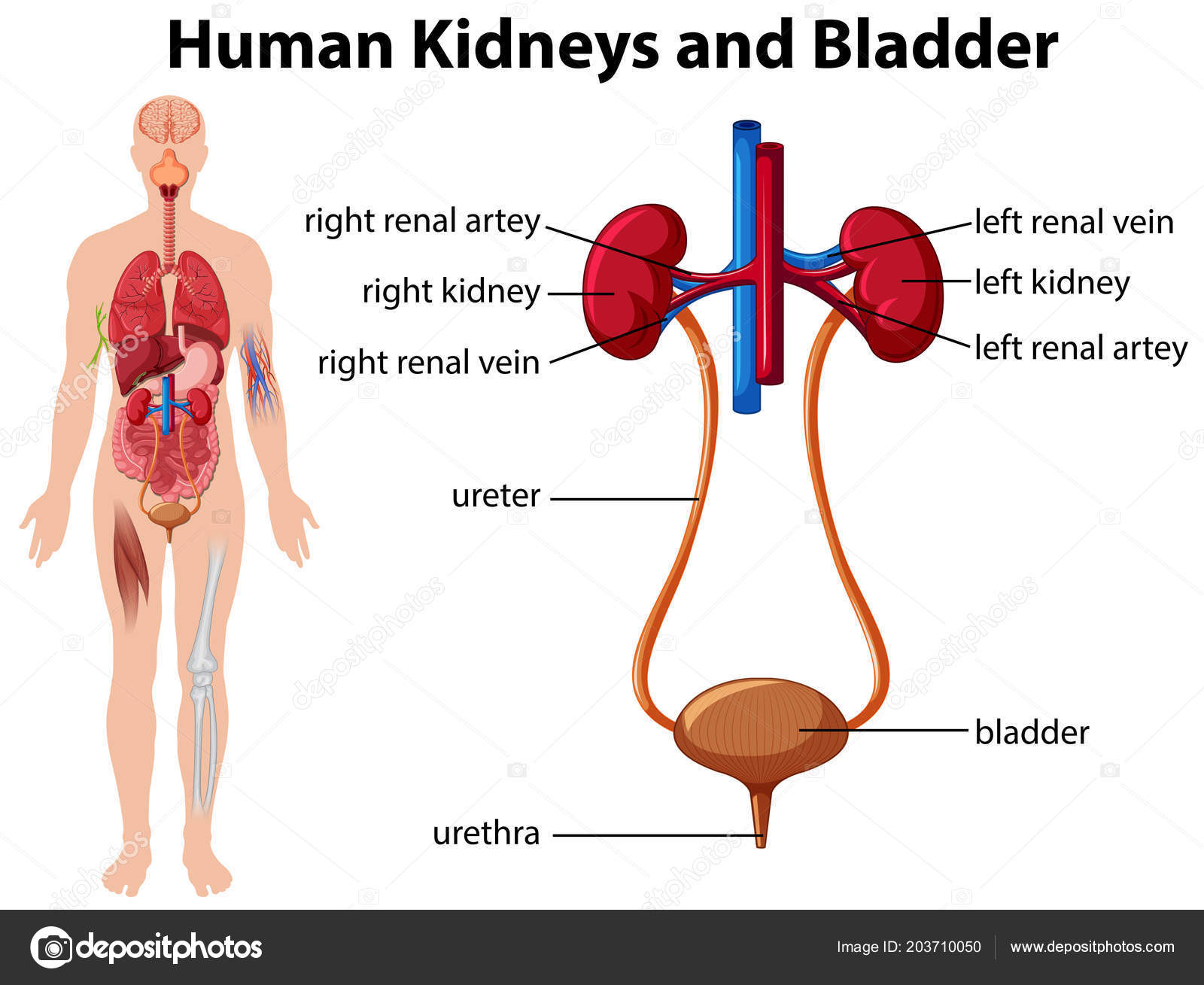 Being overweight is known to make symptoms worse.
Being overweight is known to make symptoms worse.
 It accounts for about 5% of bladder cancers and usually develops in people who have had inflammation or irritation of the bladder for a long time.
It accounts for about 5% of bladder cancers and usually develops in people who have had inflammation or irritation of the bladder for a long time.

 The TURBT procedure can also be a treatment, removing bladder tumors before the tumors can invade the muscle wall. This study is performed on an outpatient basis under spinal or general anesthesia.
The TURBT procedure can also be a treatment, removing bladder tumors before the tumors can invade the muscle wall. This study is performed on an outpatient basis under spinal or general anesthesia.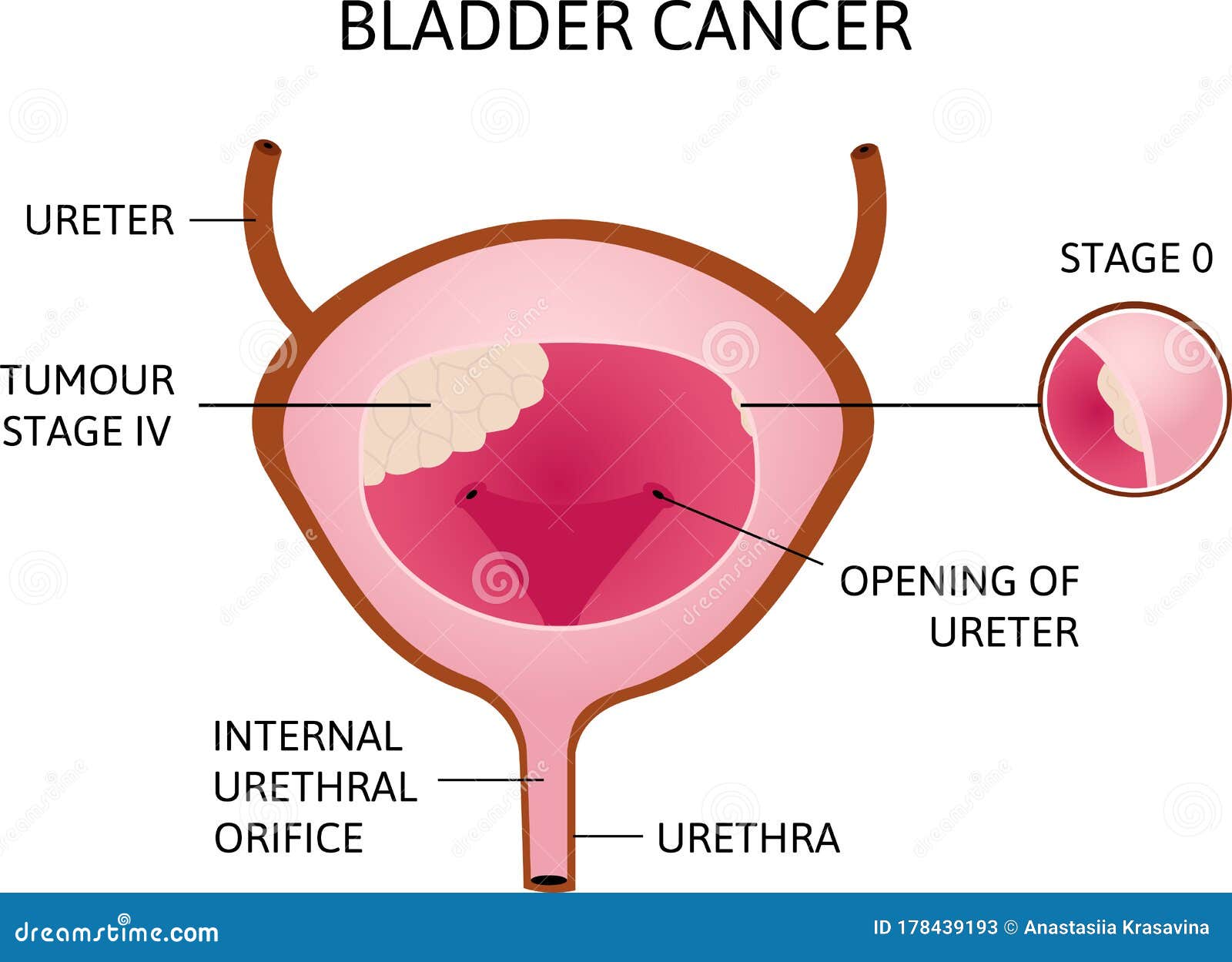
 PD-L1 is a protein found on the surface of some cancer cells. When these two proteins join, the compound prevents T cells from killing cancer cells. With inhibitor therapy, these two proteins cannot fuse, allowing T cells to kill cancer cells.
PD-L1 is a protein found on the surface of some cancer cells. When these two proteins join, the compound prevents T cells from killing cancer cells. With inhibitor therapy, these two proteins cannot fuse, allowing T cells to kill cancer cells.

 Such a symptom is especially dangerous for children, since often these “bells” indicate the presence of pyelonephritis;
Such a symptom is especially dangerous for children, since often these “bells” indicate the presence of pyelonephritis;